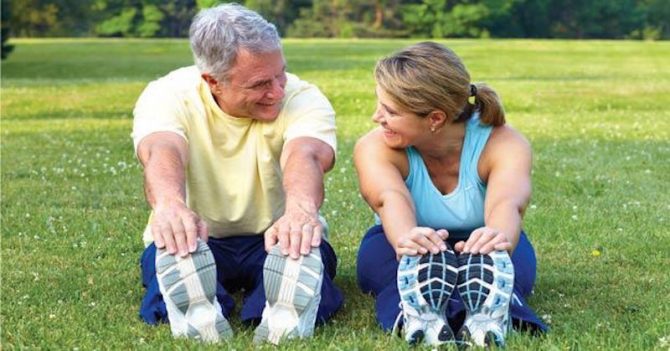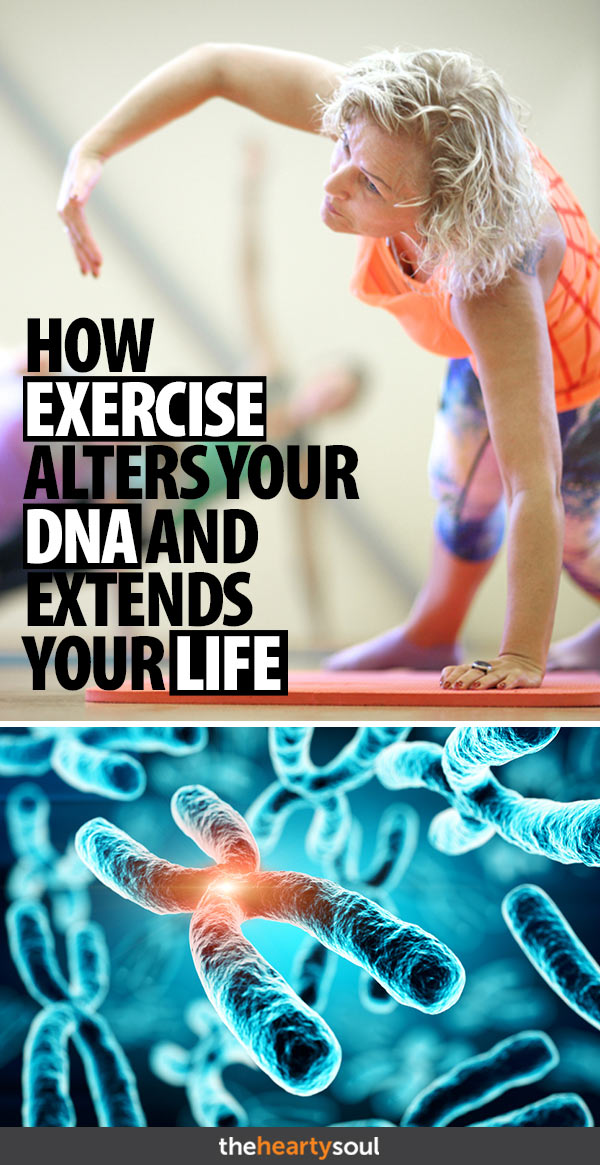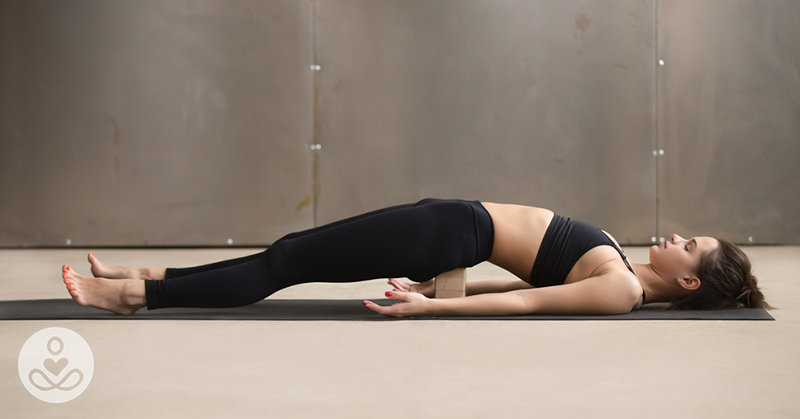Aging is an inevitable fact of life, and considering the alternative, it is viewed with much more disdain than it really deserves. There is a certain type of beauty and wisdom that comes only with increased life experience that should be celebrated.
As a society, we are constantly at odds: We are all trying to live longer, but we don’t want to look it. We spend hundreds of dollars on various products that are supposed to make our appearance defy our actual age.
It turns out that in order to reverse the signs of aging, we have to start at the cellular level. Several studies now show that the best way to address your aging cells is through exercise and lifestyle behaviors. (1, 2)
How Cells Age: Telomeres and Aging
As you age, so do your cells, or more accurately: As your cells age, so do you! They are hugely impacted by your lifestyle, and can be in good or bad shape depending on your diet and activity levels. This is why some people look incredible for their age, while others appear old long before they actually are.
Telomeres and Aging
Your cells are constantly dividing and replicating themselves, replacing old cells with new ones. As they replicate, the little pieces on the end of our DNA (called telomeres) can be shortened. The shorter your telomeres get, the “older” we become. (1, 2)
So the key, then, to preventing the signs of aging, really lies in preventing the shortening of our telomeres, and lengthening the ones that have already been shortened. How do we achieve this? Not through expensive creams, pills, or procedures, but rather through proper diet and a good daily dose of physical activity. (1, 2)
Physical Activity and Exercise Effects the Length of Telomeres
Several studies have been done on the effects of physical activity and exercise on the length of our telomeres, and they have all come to the same conclusion: Being physically active has a positive effect on telomere length and is associated with slower aging. (1, 2)
What is inconsistent, is the type and duration of activity and the impact that it has on our cells. Conclusions from various studies include:(2)
- High levels of physical activity increase telomere length
- Moderate levels of regular physical activity increases telomere length, while sedentary, low, and high levels are associated with telomere shortening
- Training for and playing a sport, especially for more than 10 years, is associated with longer telomeres
- Endurance running (those who consistently train 5 or more days per week) is associated with longer telomeres
The main thread that ties all of the studies together is that living a largely sedentary lifestyle will definitely cause telomeres to shorten, and that being consistent with your physical activity and exercise is the key to staving off the effects if aging on your cells. (1, 2)
Exercise Decreases Oxidative Stress and Inflammation
While researchers are not 100% sure as to how physical activity and exercise has these effects on our DNA, they do know it partially has to do with the decrease in inflammation and oxidative stress associated with regular activity. This decrease in inflammation doesn’t necessarily lengthen your telomeres, but it does appear to reduce the shortening that typically accompanies aging. (1, 2)
This is also why the scientific jury is still out as to exactly what type of activity (long duration, vigorous, explosive, moderate intensity, etc.) is best. Extreme volume and/or intensity exercise can also put the body under greater oxidative stress and can cause temporary inflammation. Many studies, however, found this didn’t seem to be an issue for trained athletes, in both endurance and other sports. (2)
Other Factors that Effect Telomere Length
The relationship between telomere length, oxidative stress, and inflammation goes beyond just exercise and physical activity. Other lifestyle factors that shorten your telomere length are:(2)
- Diet
- Chronic illness/disease
- Overweight and Obesity
Eating a healthy diet that includes plenty of anti-inflammatory foods will not only help fight against disease and illness, but it will also help reduce the stress on your body that shortens your telomeres and causes aging. (2)
Carrying excess fat is also strongly correlated with shortened telomeres. Thankfully, using diet and exercise to lose the weight not only prevents further shortening of your telomeres, but may actually increase the length of the telomeres in replicating cells, reversing the signs of aging. (2)
How to Lengthen Telomeres with Exercise and Reverse Aging
The first rule of lengthening your telomeres is being less sedentary, aka incorporate more movement into your day. Even if you workout for an hour or two every day, if you spend the rest of the day on your butt you aren’t doing yourself any favors. (2)
Tips for sitting less and moving more:(2)
- Get a standing desk and split your day between standing and sitting
- Walk to your coworkers’ offices, cubicles, and desks instead of emailing or messaging them
- Use a smaller water bottle or glass so you have to get up to refill more frequently
- Take the stairs for at least part of the way, walk up escalators (bonus: You get where you’re going faster!)
- Park at the back of the parking lot
- Stand on public transit and get off a couple stops early and walk
- Grab a couple coworkers and go for a walk on your lunch break (You can walk around inside in bad weather)
Try HIIT Workouts

HIIT, or high intensity interval training workouts are big calorie burners and allow you to get more work done in less time. Athletes (the ones who’s telomeres were longer across the board) use HIIT principles in their training all the time, whether it’s a distance runner doing shorter intervals, a basketball player doing suicides, or soccer player hitting it hard in the gym during the pre-season.
The great part about HIIT workouts is that they incorporate weight training and cardiovascular training all in one heart-pounding workout, so you will get the benefits of both types of exercises.
Try these tabata-style workouts or one of these scientifically proven workouts to burn the most calories in the least amount of time.
Tips on Incorporating HIIT Workouts Into Your Routine
1. Don’t do too much, too soon
HIIT workouts are just as they sound: intense! If this is your first time trying this style of workout, or you used to do HIIT all the time but haven’t in a while, do less than you think you can do. If the workout tells you to do four rounds of something, start off with two or three. If an exercise says to perform it weighted, do them unweighted, at least for the first round. Going too hard will result in you being extremely sore for several days, and will actually put your body under more stress and inflammation, defeating the purpose of the workout.
2. Don’t do a HIIT workout everyday
Even athletes don’t do gut-wrenching, hard workouts every day of the week. Switch back and forth between HIIT days and lighter cardio days, and take one or two days of complete rest each week. This allows your body to rest and heal, reducing oxidative stress and the risk of burn-out.
3. Follow Up Your Workout with a healthy, anti-inflammatory meal
Try to always get a healthy meal or snack and in within fifteen minutes to half an hour after your workout. Make sure this meal contains lean protein, unprocessed, unrefined carbohydrates, a little bit of healthy fats, and tons of antioxidants and anti-inflammatory foods. This help you to replenish your glycogen stores, rebuild muscle, and decrease the oxidative stress and inflammatory response the body has when put through hard physical activity.
4. Drink Plenty of water
Your muscles need water in order to repair themselves, and dehydration puts your body under large amounts of stress. HIIT workouts will make you sweat perhaps more than you used to, so be sure to be hydrating well during the day, take sips of water periodically throughout your workout, and drink plenty of water after you are finished. If you are working out outdoors in a hot environment, you may want to consider drinking something to help re-balance your electrolytes.
As always, a healthy lifestyle is the only real way to preventing mind and body aging and ensuring that you are at your best health, always. You are never too old to starting making positive changes in your life. Incorporating exercise and physical activity into your daily routine does not have to be complicated, however if you do feel overwhelmed or don’t know where to start, consult an exercise professional or health practitioner who can start you on the right path.
5. Stretch
You don’t need to do an hour of yoga after every workout, but taking five to ten minutes after each one to stretch the muscles you used in that day’s session will help to prevent you from being overly sore the next day.
Disclaimer:
HIIT workouts are not right for everyone. Always consult your doctor or a medical professional before starting a new workout routine to ensure it is safe for your unique needs.

Sources
- https://www.clinicalkey.com/#!/content/playContent/2-s2.0-28450121?returnurl=https:%2F%2Flinkinghub.elsevier.com%2Fretrieve%2Fpii%2FS0091743517301470%3Fshowall%3Dtrue&referrer=
- https://www.researchgate.net/profile/Grant_Tinsley/publication/315901293_Physical_activity_and_telomere_length_Impact_of_aging_and_potential_mechanisms_of_action/links/58f62904a6fdcc17e079e350/Physical-activity-and-telomere-length-Impact-of-aging-and-potential-mechanisms-of-action.pdf

